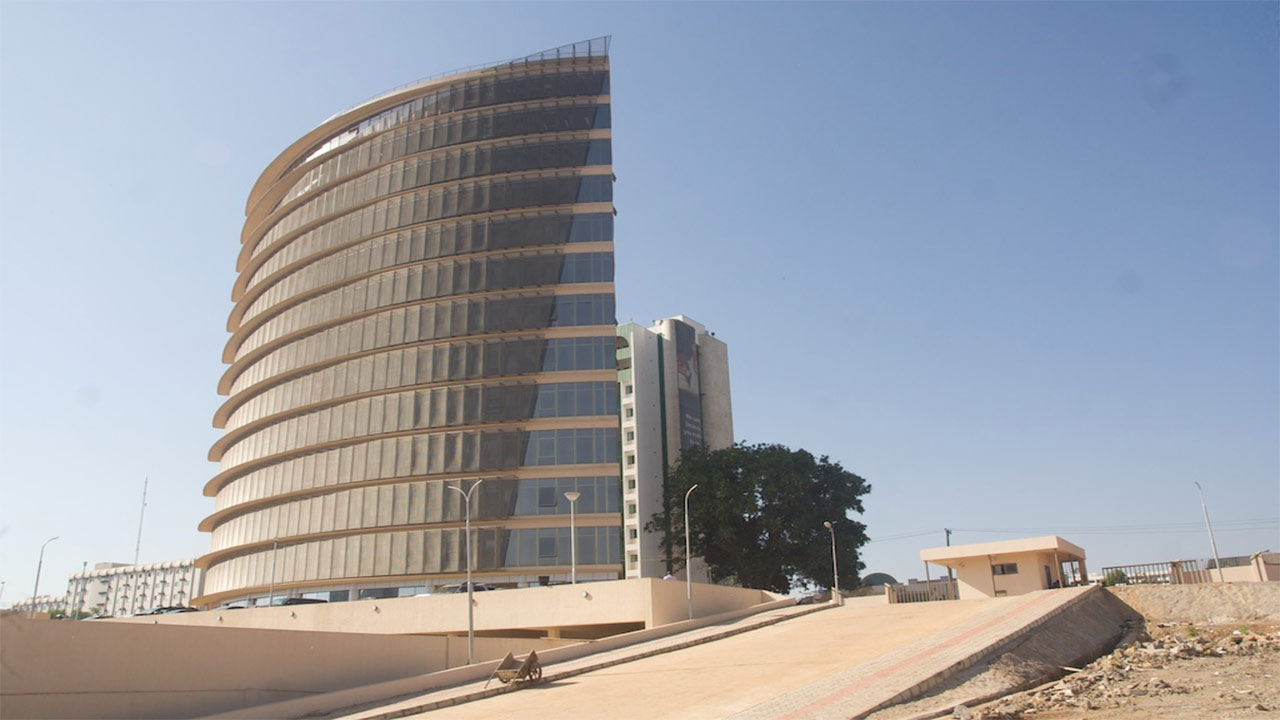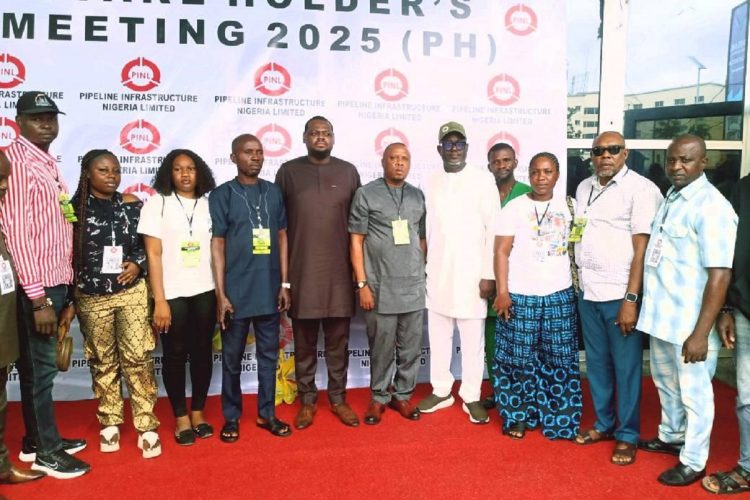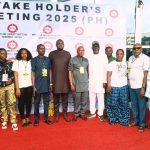
Opinion: The Role of Early Childhood Development in Achieving the SDGs
April 27, 2017
BoI’s support for businesses hits N171b
May 2, 2017Chief Michael Johnny is the outgoing Chairman of the Chevron-sponsored Egbema Gbaramatu Communities DevelÂopment Foundation (EGCDF). In this interview with Francis Sadhere, he speaks on his four-year tenure in the foundaÂtion; how the Global Memorandum of Understanding (GMoU) between Chevron and the communities have helped to develop the oil-producing areas, and other national burning issues.
What is your Regional DevelÂopment Committee – Egbema Gbaramatu Communities DevelÂopment Foundation (EGCDF) all about?
Our organisation, the EgÂbema Gbaramatu ComÂmunities Development Foundation is one of the Regional Development ComÂmittees established in 2005 folÂlowing a Global Memorandum of Understanding (GMoU) between Chevron Nigeria Limited (CNL), the Delta State government and a cluster of Egbema and GbaraÂmatu communities which include Ogbudugbudu, Adagbarasa, Tsekelewu, Polobor Bloc A, OpuaÂma Bloc A, Opuama main comÂmunity, Benikrukru, Makaraba, Gbaramatu Bloc, Kokodiagbene, Kenyagbene, Okoyitoru, among others. Our vision is to create a peaceful and friendly operating environment for economic acÂtivities, wealth creation, human capital and infrastructure develÂopment.
What are the core elements of the GMoU?
It is a community engagement concept pioneered by Chevron in 2005. It is a tripartite agreeÂment the company signed with state government and the comÂmunity clusters represented by the EGCDF. It aims to institute sustainability, partnership, transÂparency and accountability in the management of community develÂopment projects.
Before then, the company was directly involved in executing community development projects in areas of its operations in the NiÂger Delta with the result that there was no sense of community ownÂership of these projects and no susÂtainability assurance in the whole process. With the GMoU, there is a sense of community ownership of the development process; there is transparency in the process; there is a level of partnership with government and other agencies and Non-Governmental OrganÂisations (NGOs) and our people are able to manage the funds from Chevron to execute useful comÂmunity development projects and programmes.
What benefits have the affected communities derived from the pact?
We have enjoyed a lot of benÂefits in terms of infrastructure and non-infrastructure projects; caÂpacity building opportunities for the people, and more importantly, the GMoU has been instrumental to peace-building in the commuÂnities. It has created a common front for unity in the communities and has brought accountability and transparency to bear in the community development process. In terms of projects, the EGCDF has executed over 90 projects since the GMoU inception while others are ongoing. The projects are in the areas of health, water and saniÂtation, education, transport and economic empowerment. It is inÂstructive to note that community contractors bid for these projects and execute them following well-established scoping and contract award process.
Does this imply that the people are satisfied with what you are doing?
To a large extent, I will say, yes! They are seeing the difference the GMoU has made in sustaining the means of livelihood in our comÂmunities. They have never had it so good. Our communities are being transformed through the GMoU process.
If the people are satisfied, why have the agitations persisted? Some stakeholders, particularly the people of Kokodiagbene have been protesting against Chevron over electricity supply?
We are aware that not all the people will be satisfied. Again, not all will appreciate the new order of transparency and accountabilÂity the GMoU has brought about. But the GMoU remains a wonderÂful instrument for instituting susÂtainable community development in Niger Delta communities. The larger members of the society acÂcept the GMoU and are enjoying the benefits of the model in terms of the dividends of development. Like I said before, Kokodiagbene community is not the only area under the Chevron GMOU.
When Former President Good luck Jonathan was in power, there was an arrangement by the FedÂeral Government to take electricÂity to all the communities around the Escravos. That process is still on. There are ways to go about this kind of issue. Chevron is not the Federal Government. The Federal Government has already put meaÂsures in place to supply electricity to all the riverine communities and not only Kokodiagbene. My piece of advice to the people of Kokodiagbene is for them to be patient and work with Chevron so that the Federal Government can execute its plan.
When you look at the pre-GMoU era, what would you say has changed in the way you relate with CNL?
A lot has happened. In fact, the arrangement brought about community-driven process of achieving sustainable developÂment. It brought about the prinÂciple of sustainability assurance, transparency and accountability. It is also helping to establish peace-building process and mitigating conflicts. Before the GMoU, there was no community ownership of the development process, but now the community owns and drives their development. The projects are scoped and executed by the community contractors under the GMoU unlike in the past.
How do you see the role of governÂment in this development process?
The government has a major role to play as a partner in the GMoU process. We are aware that the provision of social amenities is the responsibility of the govÂernment. But, any company that embraces social responsibility and tries to sponsor community develÂopment should be encouraged. We want governments at all levels and other development agencies such as the Niger Delta Development Commission (NDDC), PADECs to emulate the GMoU. We would continue to look for areas of colÂlaboration and partnership with the government with a view to adÂvancing development to our comÂmunities.
If I will advise the government, I will recommend the GMoU as the right concept for developing the communities. The GMoU is the answer to the problem of the Niger Delta. For instance, the EGCDF has very small amount of money compared to the local governments but we are able to do much in terms of project execuÂtion. In 2016, we commissioned a number of projects. Recently, our RDC CEMB approved N800 million worth of projects and my successor is going to have a busy time executing those projects. If the federal, state and local governÂments could complement the efÂforts of Chevron in the implemenÂtation of the GMoU, we can do in a few years what the government has not been able to do in the past 30 years. The beauty of GMoU is that it focuses on the people and their ability to manage themselves. It is a document that has been put in place for the common man and the local man.
What efforts do you make to seÂcure funds from diverse sources for your projects execution?
It has been difficult getting funds from other sources. Chevron has remained the sole funder of the GMoU. However, we are commitÂted to engaging governments at all levels – Local, state and federal – to partner with the RDC and sponsor our projects. We are also seeking opportunities for collaboÂration with development agencies NDDC, PADECs to implement our projects/programs. It is not a bad idea for NDDC for instance to study the RDC’s CD plan and pick projects from there to do for the communities. We will continue our advocacy for third party fundÂing of the GMoU and collaboraÂtion with donor agencies locally and globally.
What are the major challenges facing your RDC?
Our major challenge is adequate funding. We also have the issue of government paying lip service to GMoU implementation. We have government representatives in all our committees and the ComÂmunity Engagement Management Board (CEMB) of the GMoU and yet, the government has never deemed it fit to support what we are doing through funds or other collaborative efforts. We are also challenged by the limited knowlÂedge of some of our communities’ representatives about the GMoU. We will continue to work these issues to see that the goals of the RDC are achieved.
What is the future of the GMoU and what should the stakeholders do to ensure the sustainability of the process?
The GMoU is a world-class community engagement model and it has come to stay. We are aware that the concept is being imitated by different organisations in Nigeria and globally and we highly recommend it as a frameÂwork for the development of Niger Delta communities. We want the government to come out boldly and embrace the model because it is organised, transparent, effective and participatory. Instead of sinkÂing money into several agencies that have not impacted communiÂties significantly, the government should endorse the GMoU conÂcept. It should be emphasised that the GMoU should not be left to Chevron alone. With the present economic downturn, we know it is becoming increasingly burdenÂsome for the company to remain a sole funder of the GMoU. We seek support from all governmental orÂganisations and NGOs to sustain the model.
_______________
This interview first appeared on The Authority









